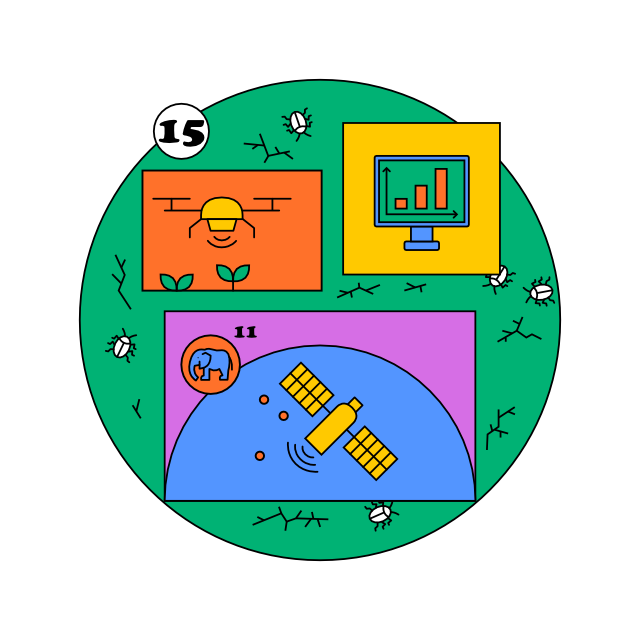SDG 15Life on land
Earth life threats: how to reverse rapid biodiversity loss?
Overview
The sixth mass extinction. That’s how scientists call the shocking loss of species currently happening on Earth. While the previous five were caused by catastrophic events, possibly volcanic activity or an asteroid impact, the sixth has been caused by humans. The latest Living Planet Report issued by the World Wildlife Fund (WWF) and more than 50 scientists from around the world estimates that wildlife populations have declined by 60% globally between 1970 and 2014.1 Biodiversity is declining at the fastest rate in history. More than 50% of agricultural land is more or less degraded and 13 million hectares of forest are disappearing every year. Along with forests, a huge proportion of the planet’s oxygen is disappearing, as well as the home to 80% of all terrestrial species of animal, plant, and insect. “This is far more than just being about losing the wonders of nature, desperately sad though that is,” says WWF’s Mike Barrett. “Nature is not ‚nice to have‘ – it is our life-support system.”2 Humanity is facing a huge challenge: to save critically endangered ecosystems. And, in so doing, our own future.
Solution and Key Innovations
To save the planet, scientists are using various technologies ranging from renewable energy to the Internet of things (IoT) – a network of digitally connected devices – to sophisticated animal monitoring and protection systems. Technology is helping not only with individual problem solving, but also with raising awareness of problems that are “ours” and have the potential to destroy us.
The University of Oxford’s WildCRU is a major European wildlife conservation research unit. A team of researchers there have developed a method to detect elephants in a certain area using artificial intelligence and satellite imagery from space. Eventually, they expect to be able to detect smaller species, too, to help protect endangered species and combat poaching. Their ground-breaking method allows the previously impossible or nearly impossible to happen. The American company Descartes Labs uses artificial intelligence to detect and track forest fires. Using artificial intelligence and satellites, the researchers working on the Brazilian project MapBiomas have detected a drastic loss of water in the Brazilian part of the Pantanal, the world’s largest tropical wetland area. The technology revealed a 74% reduction of the surface water, providing the data required to convince both the public and the government to act immediately.
The British BioCarbon Engineering company has developed an extremely fast method of tree planting – their drones can plant up to 100,000 trees a day. Together with the Norwegian Worldview International Foundation they have also been restoring mangrove ecosystems in Myanmar, which can absorb carbon dioxide five times faster than trees in rainforests.
Artificial intelligence, mapping the Earth’s surface using satellites and mining the obtained data can help protect the affected and threatened areas and focus aid, research, and improvements in the right direction.
Key Questions
- How to stop the decline of fauna and flora?
- Can technology help nature recover?
- Is AI the future of ecology?
- Will humans save the planet that they are currently destroying at an overwhelming rate?
Key Words
Biodiversity, conservation, endangered species, artificial intelligence, satellites, GPS, IoT
Interesting Resources
AI and drones helped discover a previously unknown colony of Adélie penguins
How technology and AI are saving the planet
CITEC Founder Rune Westergård’s Lecture: Technology can save the planet
